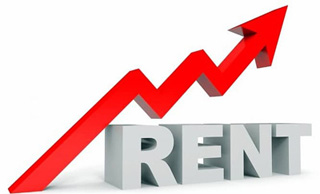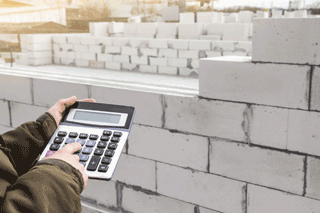Quote Of The Week
“Once interest rates have stabilised, higher yields coupled with lower values and stronger buying conditions, could entice more investors to enter the market, which would ultimately help raise rental supply.”
CoreLogic Research Analyst Kaytlin Ezzy
Slim Pickings For Renters
 There are slim pickings for tenants with concerns some will be forced to accept sub-par properties as it becomes harder than ever to find a rental property in many Australian cities.
There are slim pickings for tenants with concerns some will be forced to accept sub-par properties as it becomes harder than ever to find a rental property in many Australian cities.
The national vacancy rate is stuck at 0.9% for the third month in a row, while a vacancy rate of 3% is considered a balanced market.
Figures from Domain show Sydney’s vacancy rate fell to 1.1% in September while Melbourne held steady at 1.3%.
But it is the smaller capital cities where tenants are really struggling to find a rental with vacancy rates of just 0.6% in Brisbane, 0.5% in Hobart, 0.4% in Perth and a near non-existent 0.3% in Adelaide.
NAB head of market economics Tapas Strickland says it will continue to be tough on renters.
He says rents will continue to rise because of increasing interest rates, higher international migration numbers and fewer properties being developed as a result of materials shortages and rising building costs.
Yields Are Bouncing Back
 While bad news for renters the good news for landlords is that rents are growing faster than home prices leading to better yields.
While bad news for renters the good news for landlords is that rents are growing faster than home prices leading to better yields.
The latest NAB sentiment survey, which polls property industry professionals, predicts rents will grow by 3.5% in the next 12 months and 3.8% nationally in the next two years.
CoreLogic Research Analyst Kaytlin Ezzy says rental yields are bouncing back.
She says nationally during the September quarter dwelling yields grew by 24 basis points to 3.57%.
Although yields are now above the record lows recorded in February (3.21%) they are still well below the pre-pandemic decade average of 4.24%.
Ezzy says with interest rates expected to continue rising throughout the first half of 2023, putting downward pressure on house prices, it’s likely yields will continue to improve.
“Once interest rates have stabilised, higher yields coupled with lower values and stronger buying conditions, could entice more investors to enter the market, which would ultimately help raise rental supply.”
Construction Costs Still Rising
 Covid may feel like a distant memory to some, but it’s still having a major impact on Australia’s building industry.
Covid may feel like a distant memory to some, but it’s still having a major impact on Australia’s building industry.
Property Council of Australia, NSW acting executive director Adina Cirson says the industry is still struggling.
“Housing supply and the cost of construction for people wanting to get into the market are really challenging at the moment,” she says.
“It’s a perfect storm of global supply chain issues that are still affecting every jurisdiction in Australia, and global events such as the war in Ukraine and supply issues out of China continue to impact the sector.”
Cirson says without enough builders, constructors and a functioning workforce, it is difficult to meet the current housing demand.
It comes as one of Australia’s biggest builders warns a one-year plan to upgrade home energy efficiency standards pose risks to a construction industry which is “trying to keep its head above water”.
Metricon says a longer time frame is needed for the industry.
Borrowing Capacity Drops
 The increase in interest rates in October means home buyer borrowing capacity has dropped again.
The increase in interest rates in October means home buyer borrowing capacity has dropped again.
While rates are still low, the average monthly borrower with a $500,000 mortgage, will pay $750 more a month than they would have before the rates started rising.
Analysis by PropTrack says this means a prospective home buyer will be able to borrow 21.6% less than before the rate rises.
Although the change in interest rates has some borrowers shopping around to refinance, those who bought at the peak of the market with low deposits may find it harder to switch according to Jarden chief economist Carlos Cacho.
He says some wishing to refinance will no longer pass a lenders’ stress test and be forced to stay with their current lender.
He has labelled them “mortgage prisoners” and believes 10% to 15% of outstanding home loans could be unable to move, with first home buyers who bought near the peak particularly exposed to the risk.
Clearance Rates On The Rise
 Auction clearance rates are on the rise, hitting their highest level since May with a national clearance rate last week of 63.4%.
Auction clearance rates are on the rise, hitting their highest level since May with a national clearance rate last week of 63.4%.
The number of properties being offered for auction is also on the increase, up 11.2% on the previous week and 36.7% higher than the week before that.
The smaller capital cities continued to record the strongest results with Canberra recording the highest clearance rate of 70.9%, followed by Adelaide 69.7%.
Melbourne’s clearance rate was 66.1% while Sydney’s was 61.3%. Brisbane’s auction clearance rate took a dive, to 49.4%.
Despite the growing number of auctions, CoreLogic says last week’s auction activity is still significantly below the number of auctions held this time last year, when selling conditions were stronger and clearance rates were higher.
Louis Christopher of SQM Research says it is now clear that clearance rates bottomed out in July, and he expects the remainder of the spring selling season to be better than it was initially expected to perform.




